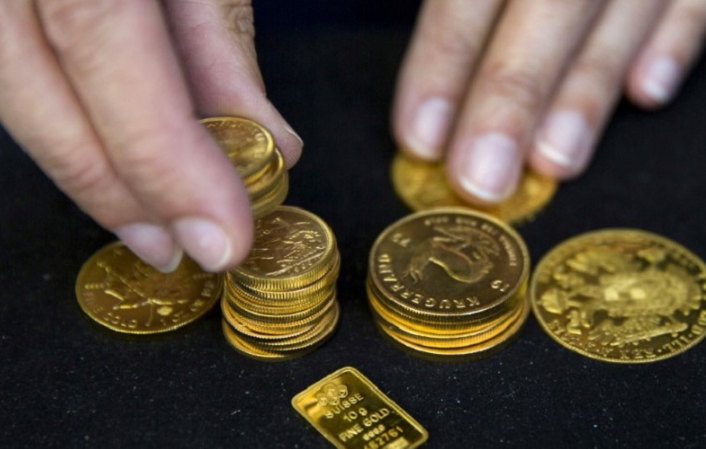What the Pause in Rate Hikes Means for Gold Investing
The financial market is full of nuances and complex interconnections, where decisions by a regulatory body or a central bank can have significant repercussions on different asset classes. One such asset that often reacts to changes in economic policies is gold. In this article, we will explore the meaning of the pause in rate hikes for gold investing, examining historical relationships and future prospects.
Gold as a Safe Haven
Gold has been considered a safe haven for centuries. In times of economic uncertainty and market instability, investors often turn to gold as a way to protect their wealth. This is because gold has a history of maintaining its value over time, even when other asset classes may come under pressure.
One of the variables that affect the price of gold is the interest rate. When interest rates are low, gold tends to be more attractive, as it does not pay interest or dividends, unlike bonds and stocks. Therefore, when central banks choose to pause interest rate hikes, this is generally interpreted as a positive signal for gold.
Interest Rates and Gold: An Inverse Relationship
The relationship between interest rates and gold is often seen as inverse. This means that when interest rates are high, gold tends to underperform, and vice versa. There are some fundamental reasons for this dynamic.
Firstly, when interest rates are low, investors have less incentive to keep their money in interest-bearing assets, such as government bonds. Instead, they may prefer to allocate a portion of their capital to gold, which is considered a stable store of value.
Secondly, lower interest rates often result in higher inflation. When the purchasing power of currency declines due to inflation, investors seek assets that can protect their wealth from the eroding value of money. Gold has a long history of serving as a hedge against inflation.
The Role of Central Banks
One of the major influences on interest rates is central bank policy. When a central bank decides to raise interest rates, this can be interpreted as a signal that the economy is performing well and that inflation is under control. As a result, investors may feel less inclined to invest in gold, as the economic environment appears stable.
Conversely, when a central bank pauses interest rate hikes, it can be seen as a signal that there are concerns about economic growth or that inflation is below desired targets. In such a scenario, gold becomes more attractive as it offers protection against economic uncertainty.
The Recent Example of the Federal Reserve
To better understand how the pause in interest rate hikes affects gold investment, we can examine the most recent example of the United States Federal Reserve. The Federal Reserve is the central bank of the United States, and its monetary policy decisions have a significant impact on global markets.
In recent years, the Federal Reserve gradually raised interest rates in response to economic growth and moderate inflation. However, at a certain point, the Federal Reserve chose to pause interest rate hikes, a decision that had implications for the gold market.
The pause in interest rate hikes by the Federal Reserve was viewed as a signal that the central bank was concerned about economic slowdown and wanted to provide support to the economy. As a result, the price of gold rose in response to this policy shift.
Future Outlook for Gold

As we look to the future, it is important to recognize that the market is dynamic, and conditions can change rapidly. The relationship between interest rates and gold is not a rigid rule, and other factors also play a significant role in determining the price of gold.
One of the variables to watch is inflation. If inflation continues to rise, investors may view gold as a more attractive asset to protect their purchasing power. Additionally, geopolitical events and financial crises can also drive demand for gold as a safe haven.
Another factor to consider is global monetary policy. The decisions of central banks worldwide impact exchange rates and economic stability, which, in turn, affect the price of gold.
Gold Investment Strategies
For investors looking to capitalize on the opportunities presented by the pause in interest rate hikes, there are several strategies to consider.
- Direct Gold Investment: A direct way to invest in gold is to buy physical metal, such as gold coins or bars. This allows investors to have physical possession of the asset, which can be an effective hedge against inflation.
- Gold Exchange-Traded Funds (ETFs): Gold ETFs are investment funds that track the price of gold. They offer liquidity and diversification, making them a popular option for investors seeking exposure to gold.
- Gold Mining Company Stocks: Investing in stocks of companies involved in gold mining can be a way to gain exposure to the gold market. However, the performance of these stocks can be influenced by additional factors such as production costs and operational efficiency of the companies.
- Gold Futures Contracts: Futures contracts allow investors to speculate on the future price of gold. However, they are also more complex and risky financial products, suitable primarily for experienced investors.
Conclusion
The pause in interest rate hikes can have a significant impact on opportunities for gold investment. Historically, when interest rates are declining or stable, gold tends to be more attractive to investors seeking protection against economic uncertainty and inflation.
However, it is important to remember that the market is influenced by a variety of factors, and the relationships between these factors can change over time. Therefore, investors should carefully consider their investment strategy and be aware of current economic conditions and central bank policies when making decisions about gold investment.
Ultimately, gold will continue to be an asset of interest for investors looking to diversify their portfolios and protect their wealth in an ever-evolving financial world.
Read More:


